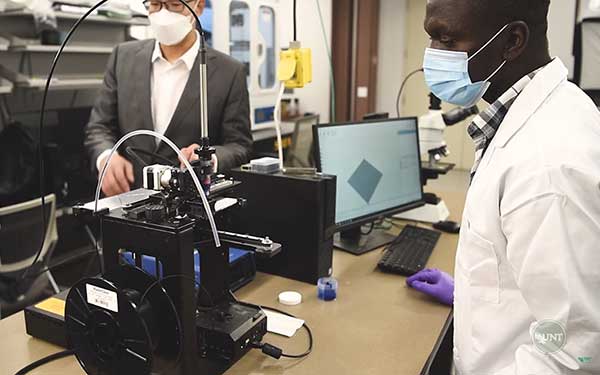Fraunhofer Fusion Factory Unveiled at IFAM
![]()
The Fraunhofer Institute for Manufacturing Technology and Advanced Materials (IFAM) in collaboration with XERION BERLIN LABORATORIES has shown off their new Fusion Factory system in Dresden, Germany. The serial production system will find its home in IFAM’s Innovation Center Additive Manufacturing (ICAM) department.
The Fusion Factory is based on filament deposition and has three main modules (3D printing, debinding, and densification) which are used for production of metallic and ceramic parts. The system can also be upgraded with extra modules to facilitate serial production.
The system was developed between IFAM and XERION, and has since been brought to market maturity, meaning this technology will presumably be ready for public consumption very soon.

Image credit: XERION
The system benefits from more efficient use of materials, as 100% of the metal in the filament ends up inside the part, as opposed to metal powder bed fusion based systems which can be particularly wasteful in the powder department. In addition, the process is said to be hands off and fully automated, from original part printing through to the final printed part.
Among other technologies available at IFAM are selective electron beam melting, three-dimensional screen printing, polymer filament printers, as well as three-dimensional stencil printing and dispense printing.
The Fusion Factory system is touted as an open-system in terms of the types of filaments compatible with the machine. XERION is apparently fine with you using other filaments, so we can probably assume that it is DRM free.
Let’s take a look at the 3 step process.
Step 1
In the first step (3D printing) the process is a familiar filament deposition process, using thermoplastic binder with ceramic or metallic powder additives passed through a heated nozzle.
Step 2
The second step, and the next station along the process is the debinding stage where the part is passed into a fluid filled reactor and heated until the binder is reduced. This is where XERION has added a lot of their own value, as much of their history as a company has been focused on the development and manufacture of high temperature vessels (such as furnaces) for manufacturing applications.
Step 3
The final stage is the densification step, also known as sintering. By this stage, most of the debinder has been removed, leaving a little to aid with maintaining structure during sintering.
As the furnace heats up, the parts begin to sinter and the remainder of the binder is burned away.
The furnace is a double walled steel construction, with water cooling to ensure safety and thermal management. The furnace can reach temperatures of up to 1500°C and is a multi-atmosphere furnace, enabling use of different gases for sintering a range of different metals.
Industry 4.0
“In the course of the project, the commercial, filament based 3D-printing systems were further developed for the production of metallic components,” said Dr Uwe Lohse, founder of XERION in an interview about the evolution of the Fusion Factory process.
“The printer has now been modified so that high-filled filaments can be processed in a reliable process. At the same time, it was achieved that all process-relevant data of the printer and the other modules can be recorded and documented. and accordingly, a “digital twin” can be formed over the entire process. That is essential in respect of process capability in the sense of Industry 4.0.”
You can see a video about the Fusion Factory from XERION below.
Original Source: https://3dprinting.com/news/fraunhofer-fusion-factory-unveiled-at-ifam/


